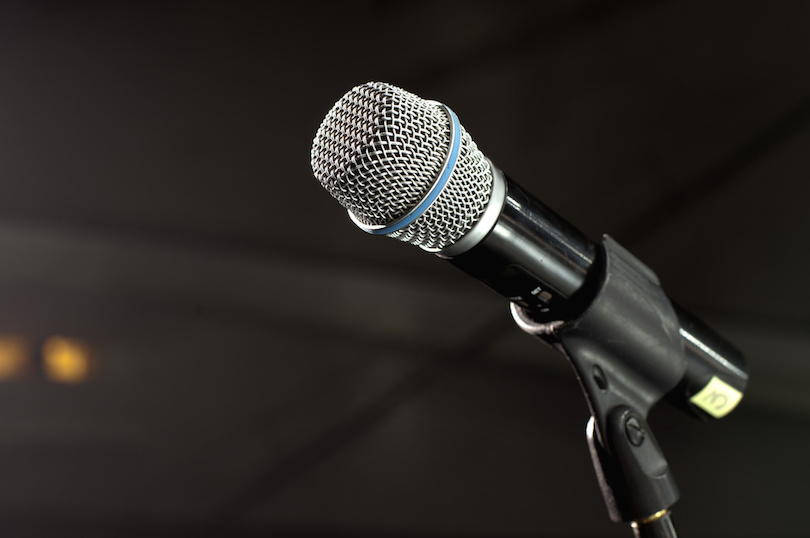
Recording crystal clear, quality sound is essential to any good film or video production – especially when your client’s reputation or appearance is at stake. Sound is one of the most important parts of film production, maybe even more so than the picture. Think about how many times you’ve watched something with a good picture but terrible sound and turned it off. In order to get the best sound quality for your production, you will need to first understand the different types of microphones out there and the basics of how they work.
The following is a short summary from the FilmmakerIQ.com video above about the types of microphones that are available and how each works:
The first thing to think about is the microphone’s directional response, or polar pattern. This describes how responsive the microphone is to sound from specific directions relative to the mics input (where the sound goes in), which is called the condenser.
Omnidirectional Microphones record sound from all different directions. It is best used for recording sound in a general area. The drawback is that it cannot distinguish between wanted and unwanted sound.
- All directions
- Best used in general areas
- Does not distinguish between unwanted and wanted sounds
Cardioid Microphones are very “directional” and pick up sound on an axis, or from a specific direction – not what’s behind it. Microphones like this are useful for live performances; they won’t pick up the crowd behind the mic and only pick up what is in front of it.
- Axis-specific directional recording
- Useful for live performances
- Does not pick up rear-sound
Cardioid condenser microphones are useful for voice over recording, too. Most can switch from an omnidirectional to a directional polar input pattern.
Hypercardioid and Supercardioid Microphones are powerful condenser microphones that record sound coming in from the front and sides, not from the rear. Shotgun mics are a good example of this type of microphone. They are useful in outdoor situations because they reject sound from the rear. Using them in conjunction with a boom pole is very effective for filming in noisy outdoor areas.
- Record from front and sides
- Useful in outdoor situations, especially with boom poles
- Reject sound from the rear
Bi-Directional Microphones have a figure-8 type of pickup pattern. They are useful mostly for musical applications.
Lavalier/Lapel Microphones are small condenser microphones with an omnidirectional pickup pattern. They work on proximity and work best in a wireless system. You can put these on someones collar and record them. The sound quality will not be as great as a microphone with a bigger condenser, but they are good for close up recording when the sound source is very near the microphone.
- Omnidirectional recording
- Work on proximity
- Used best close-up, and in conjunction with a wireless transmitter
Boundary Microphones are omnidirectional condenser microphones that run flush with the surface they are mounted in. These are not common in most entrepreneurial filmmakers’ studios. These microphones are useful for stage production and work by recording the sound as it “rolls off” the surface.
- Omnidirectional condenser
- Useful for stage production
- Runs flush with surface and records sound as it rolls off
It’s up to you to research and experiment with sound recording. Understanding the types of microphones that are available and how they work, you will be better equipped as you search for the best recording equipment that suits your specific needs for video production.
A special thanks to FilmmakerIQ.com for providing this embeddable video through their FilmmakerIQ.com YouTube channel! Check them out for TONS of great filmmaking tips and tutorials.
Comments (2)
davidsays:
November 24, 2015 at 11:15 pmGreat information here , thanks
Willsays:
October 19, 2017 at 1:17 pmA lot of people that start with video tend to not give audio the importance it needs. I always hear people worried to record 4k for Youtube videos, when in fact, having good audio is by far the most important thing. After all, no one will listen to you if they can’t, well, hear you!
Thanks for putting this together. This is very useful information for any video producer.